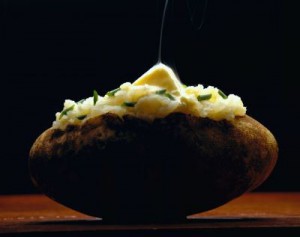What Size Potato Should I Buy For My Restaurant?
Q:What size potato should I buy for my restaurant? I serve baked, homemade mashed and home fries (you know those cut up potatoes cooked on a griddle or flat top with onions and sometimes peppers or mushrooms).
That’s a great question. I find it helpful to know the intended use of the potatoes you are purchasing so that costs per portion can be accurately calculated. When making mashed potatoes from scratch, you want to purchase an economical size and usually the 80 or 90 counts fall into that category. While it might be less peeling to buy a larger count such as a 70 or 60 count (number per carton) it might cost you 2 – 5 dollars more per box. Compare the additional labor costs for peeling a little larger potato and it may or may not be worth paying more for a potato that is going to get cut up. A No. 2 potato for home fries and mashed seems to make more sense to me.
When it comes to baked potatoes, I would go with a larger size. It’s filling, typically a lot cheaper than offering a larger size protein in comparison. Here is an example of using russet potatoes for baked potatoes. They are sold by count, per 50 lbs. carton. At $15 per case, each 80 count potato will cost $0.19 but a 60 count potato at the same carton price will cost $0.25 each. It may be $0.06 more, but if the larger size will give a better plate presentation and increase the guests’ perceived value of the dish, your restaurant may be able to charge a higher price for the menu item. With the rapidly rising beef and pork prices over the next few years, many restaurants could reduce the portion price of the protein and increase the size of the potato serving to maintain an acceptable plate cost.

Don’t forget to use these helpful tools for determining the size of the potato to order visually and the cost per potato: